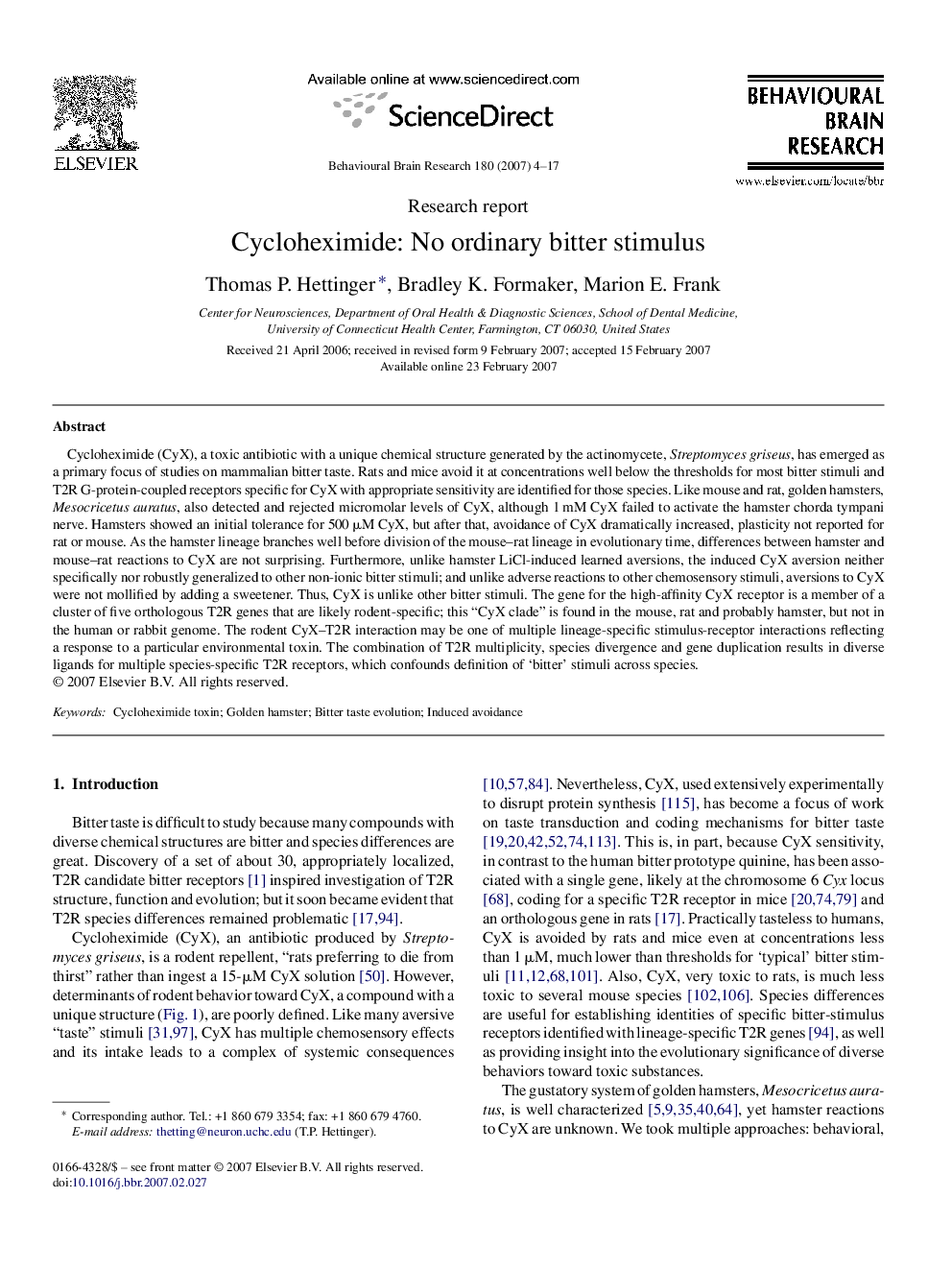| Article ID | Journal | Published Year | Pages | File Type |
|---|---|---|---|---|
| 4315648 | Behavioural Brain Research | 2007 | 14 Pages |
Cycloheximide (CyX), a toxic antibiotic with a unique chemical structure generated by the actinomycete, Streptomyces griseus, has emerged as a primary focus of studies on mammalian bitter taste. Rats and mice avoid it at concentrations well below the thresholds for most bitter stimuli and T2R G-protein-coupled receptors specific for CyX with appropriate sensitivity are identified for those species. Like mouse and rat, golden hamsters, Mesocricetus auratus, also detected and rejected micromolar levels of CyX, although 1 mM CyX failed to activate the hamster chorda tympani nerve. Hamsters showed an initial tolerance for 500 μM CyX, but after that, avoidance of CyX dramatically increased, plasticity not reported for rat or mouse. As the hamster lineage branches well before division of the mouse–rat lineage in evolutionary time, differences between hamster and mouse–rat reactions to CyX are not surprising. Furthermore, unlike hamster LiCl-induced learned aversions, the induced CyX aversion neither specifically nor robustly generalized to other non-ionic bitter stimuli; and unlike adverse reactions to other chemosensory stimuli, aversions to CyX were not mollified by adding a sweetener. Thus, CyX is unlike other bitter stimuli. The gene for the high-affinity CyX receptor is a member of a cluster of five orthologous T2R genes that are likely rodent-specific; this “CyX clade” is found in the mouse, rat and probably hamster, but not in the human or rabbit genome. The rodent CyX–T2R interaction may be one of multiple lineage-specific stimulus-receptor interactions reflecting a response to a particular environmental toxin. The combination of T2R multiplicity, species divergence and gene duplication results in diverse ligands for multiple species-specific T2R receptors, which confounds definition of ‘bitter’ stimuli across species.
